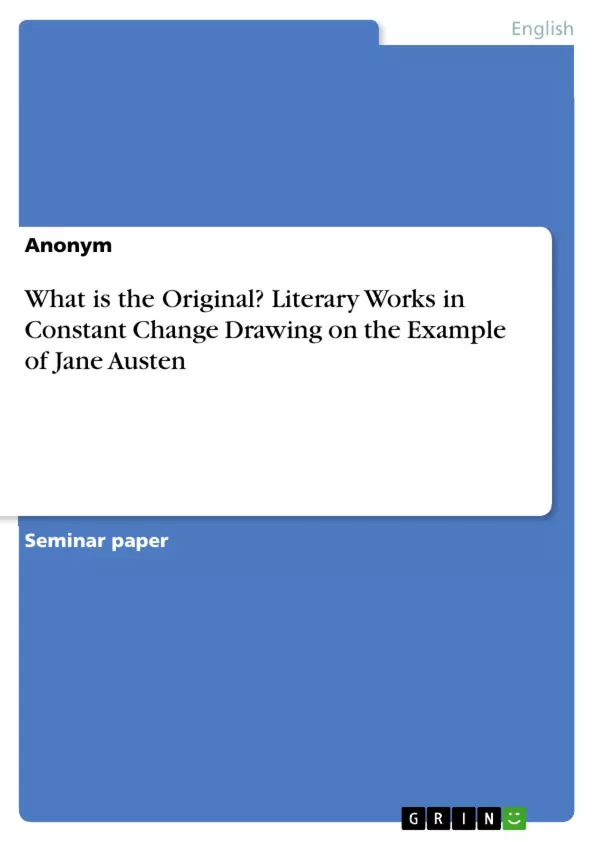What does it do to an original work, when it is constantly reread, revised, discussed, analysed and transitioned? These are the questions this paper is trying to find answers to.
To answer this question, the author will start by exploring the relation between original and adaptation, where she will give an overview of the various ways of adapting techniques and show which role fan fiction plays in this. This will lead to an abstract on fan cultures, what they are and how they come into being. This first part will be concluded by a theoretical approach on how original works are in a constant change. The second part of this paper will study these concepts in the works of Jane Austen.
Starting with a look at the reception of Austen’s novels, she will go on with an overview of why and how her work was adapted, followed by a chapter on the fan culture which focuses exclusively on her and her work. This part will then be concluded by tracing the elements of fan culture in the series Lost in Austen, to see how the changing process applies here and is furthermore shown on several levels.
Inhaltsverzeichnis (Table of Contents)
- Introduction
- Original and Adaptation
- Adapting a Literary Work
- Fan Fiction and Fan Culture(s)
- The Original in Constant Change
- Reception of Austen's Work
- Adaptation of Austen's Work
- Austen Fan Cultures
- Lost in Austen as a Work of Fan Culture
- Conclusion
Zielsetzung und Themenschwerpunkte (Objectives and Key Themes)
This paper aims to analyze the relationship between original literary works and their adaptations, specifically focusing on how the constant reinterpretation and reimagining of classic works, particularly those by Jane Austen, impacts the original text and its reception.
- The relationship between original works and adaptations
- The role of fan fiction and fan cultures in shaping literary works
- The impact of adaptation on the perception and interpretation of original texts
- The dynamic process of literary change through constant re-reading, revision, and adaptation
- The analysis of Jane Austen's works and their adaptations as a case study for understanding these concepts
Zusammenfassung der Kapitel (Chapter Summaries)
The first chapter introduces the topic by using the ITV series "Lost in Austen" as a prime example of how a fan's interaction with a classic novel can alter the original narrative. This chapter also discusses the prevalence of adaptations in various media and the implications of constant reinterpretation on original works.
The second chapter explores the complex relationship between original and adaptation, focusing on the various techniques and forms of adaptation. It highlights the role of fan fiction within the broader context of fan cultures and examines how original works are constantly evolving through various reinterpretations.
Schlüsselwörter (Keywords)
The main keywords and focus topics of this paper include: original work, adaptation, fan fiction, fan culture, literary change, reception, reinterpretation, Jane Austen, "Lost in Austen", adaptation techniques, literary criticism.
- Arbeit zitieren
- Anonym (Autor:in), 2020, What is the Original? Literary Works in Constant Change Drawing on the Example of Jane Austen, München, GRIN Verlag, https://www.grin.com/document/541417



